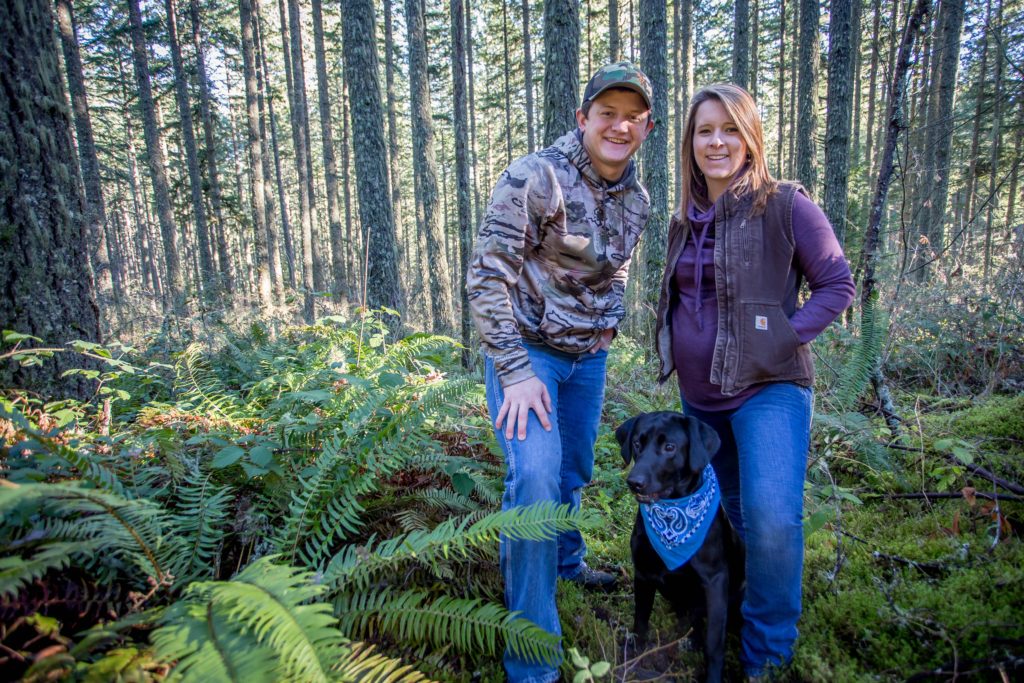By Garrett Yarbrough | November 7, 2020 | Register-Guard
**This opinion originally appeared in the Register-Guard.
Dylan Plummer’s column misrepresents not only the 2020 wildfire season but also the past decade of wildfires in Oregon. Any reasonable conversation about wildfire should not cherry pick one fire and one study to make sweeping conclusions about cause and effect, and readers should be skeptical of those who attempt to do so. Moreover, structuring competing, divisive narratives assigning blame rather than seeking solutions won’t help Oregonians recover or rebuild after the traumatic and heartbreaking loss over the last month.
The 2020 wildfire season is unlike any we’ve seen in the last 100 years — and no single cause exists. The east-wind-fueled weather event on Labor Day was extreme and unprecedented in our lifetimes, creating a fire situation that shocked seasoned firefighters and fire experts. In such an extreme event, any land would have burned, managed or not. These fires did not discriminate between young and old forests. Over a million acres burned across all ownership types — federal, state, tribal and private. In such an extreme event, fire perimeters almost perfectly mirror ownership distribution in the state: roughly 60% federally owned and 40% state/privately owned.
No one was left unscathed.
Three elements control wildfire: weather, fuel and topography. The only one we can manage is fuel. Proven, science-based forest management tools like logging, thinning and controlled burns reduce excessive vegetation that fuel catastrophic wildfires.
Outside of the extreme example of 2020, in the past decade 86% of the acres burned in Oregon were on federal land. Excessive buildup of fuels from decades of poor management have left federal forests overstocked with disease- and insect-ridden trees and standing dead timber — extremely dangerous conditions with catastrophic results when lightning strikes. This buildup creates “ladder fuels” allowing fire to torch up to tree crowns where embers catch on the wind and spread fire for miles.
Fires on managed forestland are easier to put out because fuels are reduced through harvest, lands are replanted after fire, access is maintained through roads and fires are aggressively, but safely, put out. Young plantations may burn thoroughly and completely, but it is in these areas that firefighters are often able to gain control of a wildfire and stop it from spreading. I was on the Holiday Farm Fire, and after personally scouting miles of decommissioned and degraded federal road systems for fire line, it was evident that catching and holding fire on federal ground would be more difficult than on private land.
Since 2000, 15 of the 16 megafires in Oregon started on federally managed lands — many of them then spread to private and state lands where they were put out because of road access and better fuel management. In 2020, Oregon saw 17 large fires on the landscape. Over half of them, including many of the most destructive fires like the Beachie Creek, Archie Creek and Riverside fires, likely originated on federally managed lands and spread to other ownerships.
These are simply the facts that help us move away from assigning blame and instead to uniting around solutions. Now is the time for practical solutions and actions to put out dangerous fires, protect against future catastrophic fires, and restore and rebuild communities.
Instead of assigning blame, our sector prefers to get to work. Every year Oregon’s timber industry provides millions of dollars of equipment and manpower to battle fires to save people and property, at the risk of their own lives. 2020 required even more — with state and federal firefighting resources spread thin, private foresters and loggers filled the gap. Private forest landowners and operators were and still are on the front lines supporting federal and state firefighting efforts, with more than 650 employees and over 350 pieces of privately owned equipment. In many cases, private resources were the only crews on significant portions of the 2020 fires. Some of those men and women had lost their own homes and still reported to the fire line the following day to help save surrounding communities.
And now that rains and firefighting efforts have slowed the spread of the fires, the forest sector is pivoting its focus to the future — restoration and regeneration of Oregon’s forests — a feat that will likely require over 100 million tree seedlings. Restoring hundreds of thousands of acres of damaged forest back to healthy, thriving forests is the best way to prevent dead and dying trees from re-burning in the future (dead trees create future fuel for wildfires) and maximize the forest’s ability to capture and store carbon.
That’s what we’ll be focused on in the coming months — solutions that help Oregonians recover. We invite others to join us.
Garrett Yarbrough is a Lane County forester and firefighter.

